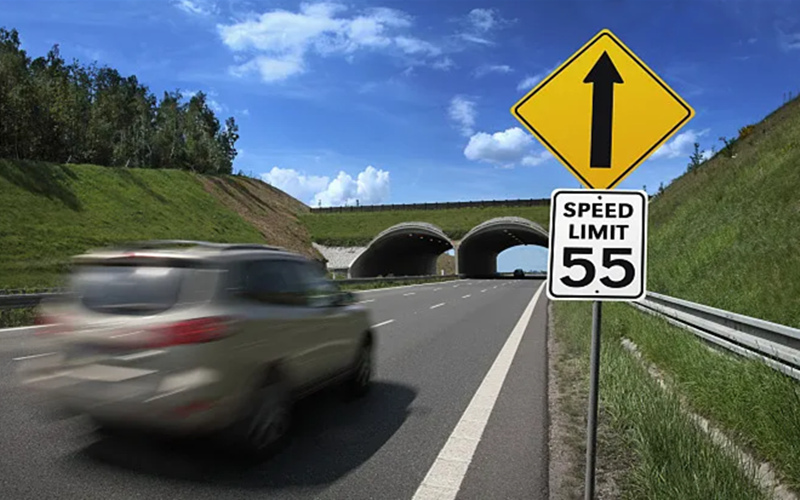Radar Signs with Cameras: The Ultimate Traffic Calming Solution for Modern Roads

Introduction: The Speed Management Crisis
The National Highway Traffic Safety Administration (NHTSA) reports that speeding contributes to 29% of all traffic fatalities – claiming over 11,000 lives annually in the US alone. Traditional speed enforcement methods struggle with scalability, costs, and driver behavior modification. Enter radar speed signs with integrated cameras: intelligent systems that combine real-time speed feedback with violation documentation, creating a 360° traffic calming solution proven to reduce dangerous driving by up to 73% (ITE Journal, 2022).
Section 1: Core Technology Explained
How Radar-Camera Synergy Works
-
Doppler Radar Operation: K-band (24.150 GHz) or Ka-band (34.7 GHz) sensors accurately measure vehicle speed within ±1 mph accuracy at 0.3-1.2 mile range
-
Intelligent Triggering: AI algorithms activate cameras only when preset speed thresholds are exceeded (e.g., 10+ mph over limit)
-
Multi-Sensor Verification: Radar validation + license plate recognition + timestamp/GPS coordinates create court-admissible evidence packages
-
Data Transmission: 4G/LTE or satellite connectivity enables real-time violation reporting to cloud platforms
*Technical Insight: Modern systems like TraffiStar S350 use dual-radar cross-validation to eliminate false readings from adjacent lanes – critical for multi-lane roads.*
Section 2: Regulatory Compliance & Legal Frameworks
Meeting MUTCD Standards
Radar signs with cameras must comply with Manual on Uniform Traffic Control Devices (MUTCD) Section 2B.13:
-
Minimum font height requirements (16″ for 35mph zones)
-
Proper yellow retroreflectivity (ASTM D4956-19)
-
Flashing beacons synchronized with violation capture
-
Critical Distinction: Unlike red-light cameras, speed camera signs require “Photo Enforced” placards per FHWA guidance
Global Compliance Variations:
| Country | Signage Requirement | Speed Threshold |
|---|---|---|
| USA | “PHOTO ENFORCED” (MUTCD R10-18) | Typically 11+ mph over limit |
| UK | Approved “Safety Camera” signage | 10%+2mph over limit |
| Australia | “Speed Camera Ahead” signs | 3km/h+ over limit |
Section 3: Documented Effectiveness Metrics
Case Study: Phoenix, AZ Deployment
-
Location: 7-school corridor (45mph zone)
-
System: Radarsign RTC-30 with 5MP IR cameras
-
Results (6-month study):
-
85% reduction in >55mph violators
-
42% average speed decrease during school hours
-
$217,000 annual savings vs. police patrol enforcement
-
ROI achieved in 11 months
-
Comparative Effectiveness Table:
| Traffic Solution | Speed Reduction | Cost per Location | Behavior Change Duration |
|---|---|---|---|
| Radar Sign Only | 10-15% | $6,000-$12,000 | 2-4 weeks post-removal |
| Radar+Camera | 35-73% | $15,000-$28,000 | Persistent beyond 6 months |
| Police Patrol | 40-60% | $86/hour | Immediate only |
Section 4: Top 5 Industry-Leading Systems (2024)
-
TraffiStar S350 Dual-Radar
-
99.3% accuracy in heavy traffic
-
Dual 1080p cameras with HDR imaging
-
Solar-power capable
-
-
Radarsign RTC-30 HD
-
MUTCD-compliant reflectorization
-
Integrated violation ticketing system
-
5G cloud connectivity
-
-
Carmanah CVS-700
-
Radar + thermal imaging for night operations
-
Class 1 Division 2 hazardous location rating
-
5-year warranty
-
-
Verra Mobility Spectra III
-
AI-powered near-miss detection
-
Pedestrian safety analytics
-
DOT-approved for work zones
-
-
Kustom Signals Falcon HD
-
Mobile trailer deployment option
-
Automated license plate recognition (ALPR)
-
Real-time data dashboards
-
Section 5: Strategic Implementation Guide
Optimal Placement Protocol
-
High-Risk Zones:
-
School areas (400ft buffer zones)
-
Work zones with >5 worker fatalities/yr
-
Horizontal curves with >7° curvature
-
-
Sightline Requirements:
-
Minimum 500ft visibility distance
-
30° maximum approach angle
-
7-10ft mounting height
-
-
Avoidance of “Frequent Falsing”:
-
150ft from traffic signals
-
300ft from speed limit transitions
-
Avoid metal structures causing radar interference
-
Section 6: Maintenance & Data Management
Critical Operational Protocols
-
Calibration: Quarterly radar accuracy verification (NIST-traceable standards)
-
Data Security: AES-256 encryption + GDPR/CCPA compliance modules
-
Evidence Chain-of-Custody:
-
Radar validation timestamp
-
Plate recognition audit log
-
Geo-tagged image metadata
-
Secure cloud archiving (typically 120 days)
-
Section 7: Overcoming Implementation Barriers
Addressing Common Objections
“Camera Systems Invade Privacy”
-
Solution: Configure systems to blur driver faces & store data <90 days per IACP guidelines
“Municipalities Just Want Revenue”
-
Counter: Demonstrate cost-neutral operations – 100% of fines fund school zone safety programs (see: Bellevue, WA model)
“Signs Become Invisible Over Time”
-
Mitigation: Dynamic messaging systems that rotate warnings (“YOUR SPEED: 47”, “SLOW DOWN”, “SCHOOL ZONE ACTIVE”)
Conclusion: The Future of Intelligent Speed Management
Radar signs with cameras represent the convergence of behavioral psychology and enforcement technology. As municipalities face rising pedestrian fatalities (up 13% in 2023 per GHSA) and budget constraints, these systems deliver measurable ROI while creating self-enforcing roadways. Emerging integrations with connected vehicles will soon enable direct speed limit broadcasting to car dashboards – creating a closed-loop safety ecosystem.
Proposed FAQ Section (Optimized for Featured Snippets)
Q: How accurate are radar speed signs with cameras?
A: Modern dual-radar systems achieve 99.3% accuracy when calibrated quarterly, exceeding NHTSA enforcement standards.
Q: Can these systems issue tickets automatically?
A: 28 states allow automated enforcement, but most require law enforcement verification before citation issuance.
Q: What’s the typical cost for a radar sign with camera?
A: Professional-grade systems range from $15,000-$28,000 including installation, with 5-7 year lifespans.
Q: Do they work at night?
A: Yes, infrared cameras capture violations 24/7 with license plate readability at >150ft distance.
